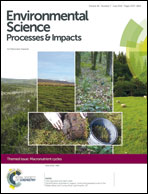Practical strategies for identifying groundwater discharges into sediment and surface water with fiber optic temperature measurement
Abstract
Identifying or ruling out groundwater discharges into sediment and surface waters is often critical for evaluating impacts and for planning remedial actions. Information about subsurface structure and groundwater can be helpful, but imperfect information, heterogeneous materials, and the likelihood of preferential pathways make it difficult to locate seeps without direct seep monitoring. We present the practical application of a method that uses fiber optic temperature measurement to provide high-resolution, sensitive, and dynamic monitoring of seepage from sediments over large areas: distributed temperature sensing to identify groundwater discharge (DTSID). First, we introduce a stochastic Monte Carlo method for designing DTSID installation based on site characteristics and the required probability of detecting particular size seeps. We then present practical methods for analysing DTSID results to prioritize locations for further investigation used at three industrial locations. Summer conditions generally presented greater difficulty in the method due to stronger environmentally-driven temperature fluctuations and thermal stratification of surface water. Tidal fluctuations were shown to be helpful in seepage detection at some locations by creating a dynamic temperature pattern that likely reflects changing seepage with varying water levels. At locations with suitable conditions for the application of DTSID, it can provide unique information regarding likely seep locations, enhancing an integrated site investigation.


 Please wait while we load your content...
Please wait while we load your content...